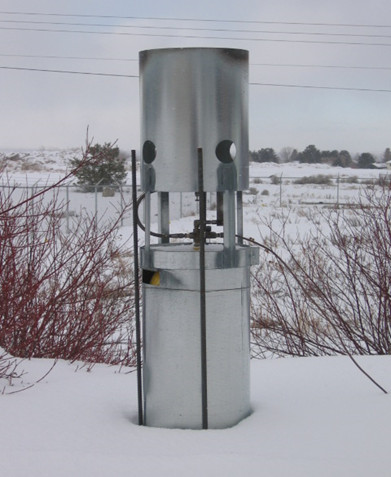
Historically, winter cloud-seeding programs started in Utah in the early 1950's and have continued for most years from 1974 to the present. Cloud-seeding programs, or the system of planting small particles into winter storm clouds to increase snowfall, are designed to increase higher elevation snowpacks with the goal of enhancing spring and summer runoff. Utah regulates cloud seeding through the Utah Department of Natural Resources' Division of Water Resources. Funding appropriated annually by the Utah State Legislature, in the amount of $300,000 in 2021, requires matching funds from local partners in order to be utilized.
Implementation of cloud seeding throughout the state is provided predominantly by the private firm of North American Weather Consultants, who has all appropriate licenses and permits. The technology used to implement cloud seeding includes ground-based, manually-operated, silver-iodide, cloud-seeding-generator units (see photo) stationed throughout valley and foothill locations. The cloud-seeding-generator units emit particles derived from a solution of silver iodide.
The Central Utah Water Conservancy District (CUWCD) partners with multiple entities to provide cloud-seeding programs in various geographic areas within CUWCD boundaries. The programs include:
- The Uinta Mountains Program
- The West Uintas Program
- The Sanpete County and Juab County portions of the Central and Southern Utah Program
- The Sanpete County portion of the Emery Program
The efficacy of cloud seeding is difficult to quantify, but the average runoff increase of the above programs is approximately 5 percent, resulting in additional spring runoff of more than 100,000 acre-feet.